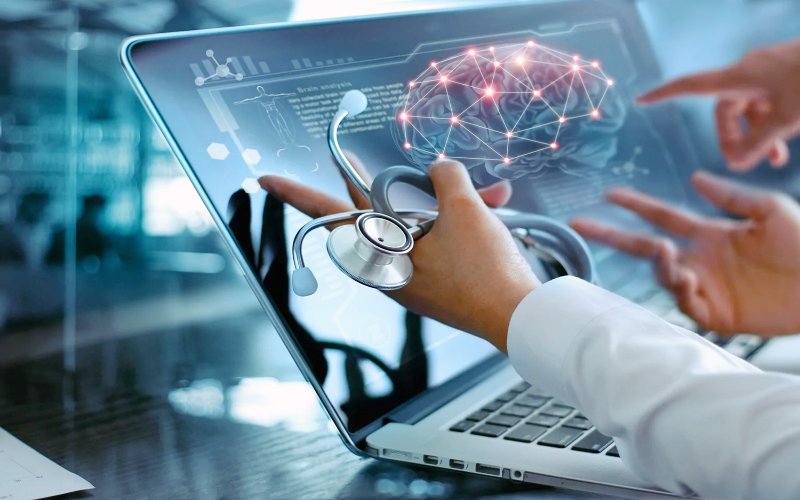What Is Digital Twin Technology?
Digital Twin Technology is a groundbreaking innovation that bridges the gap between the physical and digital worlds. By creating a virtual replica of physical assets, processes, or systems, this technology allows real-time monitoring, analysis, and optimization of real-world performance.
In simple terms, a digital twin acts as a dynamic link between the physical object and its digital counterpart. With advancements in IoT and data analytics, digital twins are now an essential tool for understanding complex systems and making data-driven decisions.
How Does Digital Twin Technology Work?
At its core, Digital Twin Technology involves creating a digital model that mirrors a physical asset. Here’s how it works:
Key Features of Digital Twin Technology
- Real-Time Data Integration: Sensors embedded in physical assets continuously feed data into the digital model.
- Scenario Simulation: The digital twin can simulate various scenarios, providing valuable insights for optimization.
- Scalability: It can represent anything from a single machine to an entire city or ecosystem.
The Process Behind Digital Twins
- Data Collection: IoT sensors collect data from physical assets.
- Data Processing: The information is analyzed and used to create an up-to-date virtual representation.
- Optimization Feedback: Insights generated by the digital twin are used to refine and improve physical operations.
Applications of Digital Twin Technology
Digital Twin Technology in Manufacturing
Manufacturers use digital twins to monitor production lines, improve efficiency, and reduce downtime. By simulating factory operations, they can detect bottlenecks and optimize processes.
For instance, automobile factories use digital twins to track assembly-line robots, predicting maintenance needs before a breakdown occurs.
Digital Twin Technology in Healthcare
Healthcare is leveraging digital twins for personalized patient care. Virtual replicas of organs, such as the heart, help doctors simulate surgeries and plan interventions more effectively.
This application ensures safer outcomes by reducing risks during medical procedures.
Digital Twin Technology in Urban Planning
Cities are adopting Digital Twin Technology to design infrastructure projects, manage resources, and improve the quality of life for residents.
Singapore, for example, uses a city-wide digital twin to monitor traffic flow, reduce energy consumption, and plan sustainable urban developments.
Benefits of Digital Twin Technology
The widespread adoption of Digital Twin Technology is driven by its ability to deliver significant benefits:
Predictive Maintenance
Digital twins help identify potential equipment failures early, reducing unexpected downtime and lowering maintenance costs.
Improved Decision-Making
By simulating different scenarios, businesses can make data-driven decisions with confidence, enhancing overall efficiency.
Sustainability Goals
Digital twins contribute to environmental sustainability by optimizing energy use and minimizing waste across industries.
Cost Savings
Organizations using digital twins often see reduced operational costs, thanks to better resource allocation and proactive issue resolution.
Challenges in Implementing Digital Twin Technology
While Digital Twin Technology offers numerous advantages, its adoption isn’t without challenges:
Data Integration Complexity
Gathering and integrating data from multiple sources can be resource-intensive, especially for large-scale operations.
High Initial Investment
Setting up the infrastructure for digital twins requires significant investment in IoT devices, cloud platforms, and skilled personnel.
Cybersecurity Concerns
The heavy reliance on real-time data makes digital twins susceptible to cyberattacks. Ensuring robust cybersecurity measures is crucial.
Emerging Trends in Digital Twin Technology
AI Integration in Digital Twin Technology
Combining digital twins with artificial intelligence (AI) enhances their predictive capabilities. AI-driven twins can identify patterns and recommend optimizations autonomously.
Expansion into Consumer Applications
From virtual product try-ons in retail to personalized energy management systems at home, Digital Twin Technology is finding its way into everyday consumer experiences.
5G Connectivity and Digital Twins
With faster data transfer enabled by 5G networks, digital twins are becoming more responsive, unlocking new possibilities for real-time monitoring and control.
The Future of Digital Twin Technology
The future of Digital Twin Technology holds immense potential. As IoT devices and data analytics evolve, digital twins will play a critical role across industries.
Vision for Tomorrow
- Airplanes could virtually test flights without risking lives or resources.
- Smart buildings might adjust energy consumption based on real-time weather predictions.
- Healthcare could ensure treatments are uniquely tailored to each patient using virtual models.
This technology is not just a tool for today but a cornerstone for innovation in the years ahead.
Digital Twin Technology is reshaping how businesses and cities operate, paving the way for smarter, more efficient systems. By overcoming challenges and embracing emerging trends, organizations can unlock its full potential and stay ahead in a competitive landscape.
Also visit on techitl.com.
